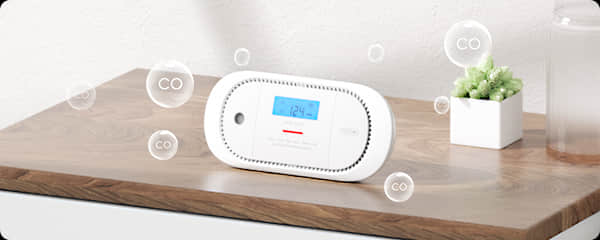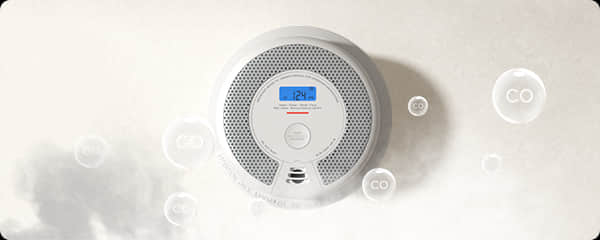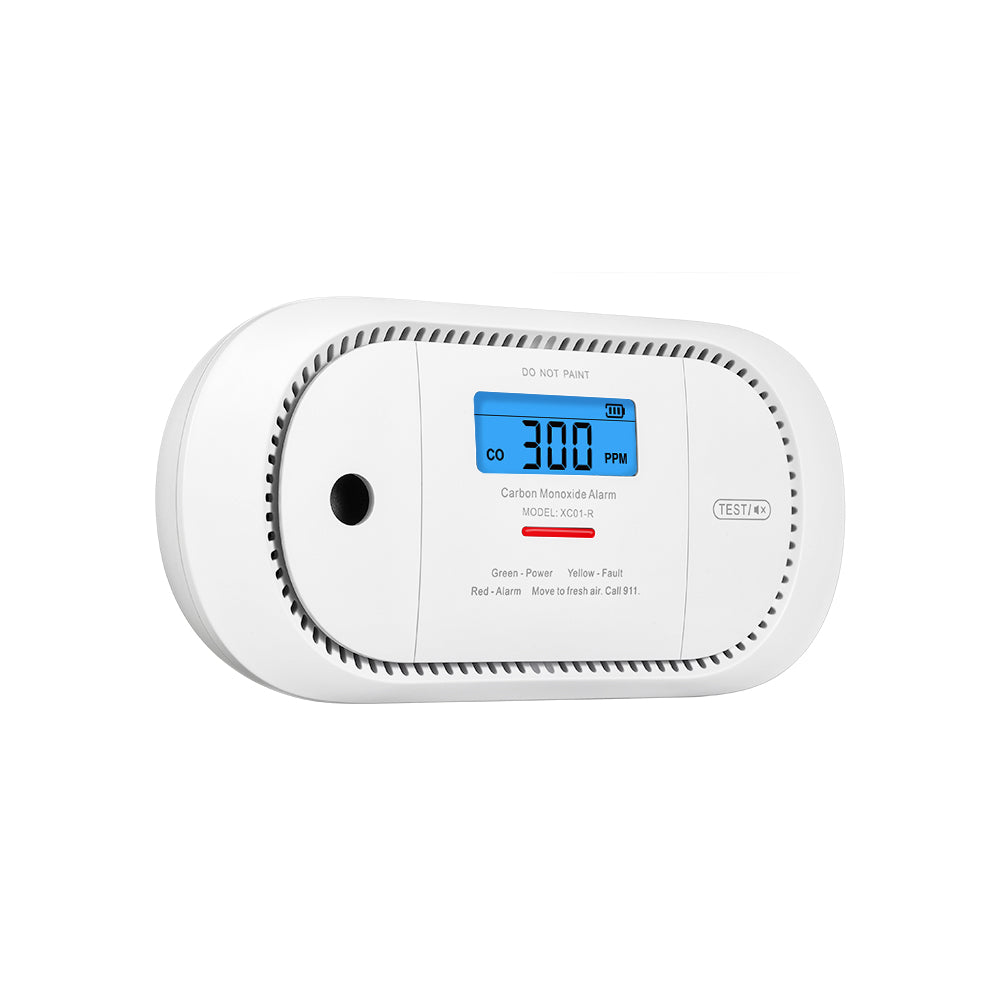What Is the Difference Between Carbon Monoxide and Carbon Dioxide?
Thu, Jan 28, 2021
Carbon monoxide vs carbon dioxide – Both gases made up of oxygen and carbon, are in our environment, but contrary to what many think, do not cause the same effects.
Carbon monoxide is a highly toxic gas derived from the incomplete burning of fossil fuels (charcoal and mineral, gasoline, kerosene, and diesel oil). Fires, which occur in forests all over the world, also send millions of tons of carbon monoxide into the atmosphere. It is a flammable, colorless, odorless gas that, if ingested in small quantities, can cause headaches, slow thinking, vision problems, and loss of manual skill.
Carbon dioxide is an important gas in the plant kingdom, as it is essential for carrying out photosynthesis. This gas is released in the breathing process (in the exhalation) of humans and also from the burning of fossil fuels (gasoline, diesel, kerosene, mineral, and vegetable coal).
A large amount of carbon dioxide in the atmosphere is harmful to the planet as it creates an increase in the greenhouse effect and, consequently, increasing global warming.
Carbon dioxide is also used commercially in some drinks and fire extinguishers, but like carbon monoxide, if inhaled in large quantities, can cause death by suffocation.
In this article, we will learn more about the difference between Carbon Monoxide and Carbon Dioxide, and will talk about how to avoid risks in addition to focusing on the importance of performing preventive maintenance.
What Is Carbon Monoxide?
Carbon monoxide (CO) is a tasteless, odorless, colorless, toxic, flammable gas slightly less dense than air. It has a molecular formula of CO and a molecular mass of 28.01 g/mol.
A CO molecule contains one carbon atom and one oxygen atom. There is a triple bond between a single carbon atom and a single oxygen atom made of two pi bonds and one sigma bond, creating a dipole moment –C≡O+, which makes it polar.
CO is a commercially essential chemical as it is used in the manufacturing of bulk chemicals. It is used in reactions such as Mond’s process to purify Nickel.
It is also used in water-shift reactions to produce Hydrogen, and it forms several chemical reactions as a by-product. It is produced in the incomplete or thermal decomposition of several organic materials. More production of carbon monoxide in nature causes depletion of the ozone layer.
What Is Carbon Dioxide?
Carbon dioxide (CO2) is a slightly acidic-tasting, odorless, colorless, non-flammable gas at room temperature, and results from the oxidation of carbon. It is heavier than air.
The main sources of carbon dioxide are the combustion of fossil materials (coal, petroleum derivatives, biomass, etc.) and the aerobic respiration of animal species. To a much lesser extent, natural phenomena such as volcanoes also contribute to increasing the rate of CO2.
CO2 is a molecular solid. It is a one-carbon compound with the molecular formula CO2 with a molecular mass of 44 g/mol. The linear molecule consists of a single carbon atom bonded to two oxygen atoms with a double bond, each comprised of one sigma bond and one pi bond O=C=O.
Carbon dioxide is essential to life.
Where Does Carbon Monoxide Come from, and How Can We Prevent It?
Carbon monoxide is generally found in smoke produced every time you burn fuel in trucks or cars, furnaces, gas ranges, fireplaces, grills, lanterns, stoves, or small engines. It is produced due to incomplete oxidation of carbon. It is a toxic gas, especially to animals that use hemoglobin to carry oxygen through their blood. Some processes in modern technology still produce carbon monoxide as a byproduct.
Steps to prevent or control production of carbon monoxide include:
- Install a battery back-up or battery-operated Carbon Monoxide detector in your house and replace or check the battery when you change the time on the clocks every fall and spring. Place detectors where you can easily hear if it alarms. A detector will tell you the highest CO concentration in your home. Don’t forget to replace it every five years.

X-Sense CO03D Carbon Monoxide Detector
- Digital LCD clearly displays real-time CO concentration levels and battery power.
- 10-year sensor life with replaceable batteries provides uninterrupted 24/7 protection.
- Detects CO threats accurately with the advanced Figaro electrochemical CO sensor.
- Easy to install onto any wall or ceiling without hardwiring.
- Meets safety standards UL 2034 (US) and EN 50291 (EU).
$29.99
- All systems or appliances that burn fuels should be serviced by a qualified technician every year.
- While using gas refrigerators, if you smell any unusual odors, it is necessary to have expert service. Leakage of CO may be the cause of this odor.
- Make sure you buy gas equipment carrying the seal of a national testing agency.
- Gas appliances should be vented properly and horizontal pipes for appliances such as a water heater, gas stoves, and gas cloth dryers should incline slightly as they go outdoors. This prevents CO from leaking if pipes are not joined tightly. They should also be checked once a year.
- Clean your chimneys or get them checked every year as they can block debris, and never patch a vent pipe with tape glue or something similar, as it may cause CO to gather up inside your home or cabin.
- Never use a gas range or oven for supplemental heating, as this can cause CO build up inside your home or cabin.
- Avoid burning charcoal indoors, as it gives off CO.
- Avoid using flameless chemical portable heaters or a portable gas camp stove indoors. It also causes CO build up inside your house or cabin.
- Avoid using a generator in your home, garage, or basement at a distance of greater than 20 ft. away from a window, door, or vent.
- While using a generator, use a battery-operated or battery-backed CO detector to keep track of the CO level.
- Automobiles or trucks must be checked regularly and should be serviced by mechanics at regular intervals.
Where Does Carbon Dioxide Come from and Does It Harm?
- CO2 is a vital part of the environment, and CO2 alone doesn’t cause harm to us. The human breathing mechanism revolves around CO2!
- It acts as a simple asphyxiant, which means that if the CO2 level in a room rises, it will replace the oxygen that your body needs. Symptoms of CO2 inhalation are “flu-like”. They can be as mild as a heavy head, or as severe as passing out or even death.
- Also, CO2 is an asphyxiant and replaces the oxygen in our body, which can create adverse effects.
- For concentration levels less than 1000 ppm, there are limited to almost no health effects.
- At concentration levels around 1000-2500 ppm, there are few yet observable effects in our thinking process. It can reduce one’s concentration, focus, and make one feel like it is difficult to breathe.
- At the 2500-5000 ppm level there is a significant effect on our cognitive functioning. These levels can also cause fatigue and mild headaches.
- At higher levels (>50000 ppm) it may cause one to lose consciousness leading to a coma and risk of death.
- Even at lower levels, one may feel dizzy, tired, or depleted.
- Try keeping windows open when you feel it is difficult to breathe if it might be due to CO2 build-up.
- The best way to avoid CO2 build up is to keep buildings as ventilated as possible.
It should be noted that all types of combustion must be carried out with excess oxygen to ensure that carbon dioxide is formed (non-toxic gas). Carbon monoxide, a very toxic gas, is probably the gas that has cost more human lives in non-war situations.
It is known that carbon dioxide is the main cause of the greenhouse effect, and as a consequence, the main contributor to global warming. Therefore, all efforts being made to reduce emission and thus reach a balance between "production and elimination" of this gas are essential, so that the growth of its concentration in the atmosphere stops, returning to equilibrium in the gas cycle.
You may also like: Types of X-Sense Smoke Alarms and Carbon Monoxide Alarms











